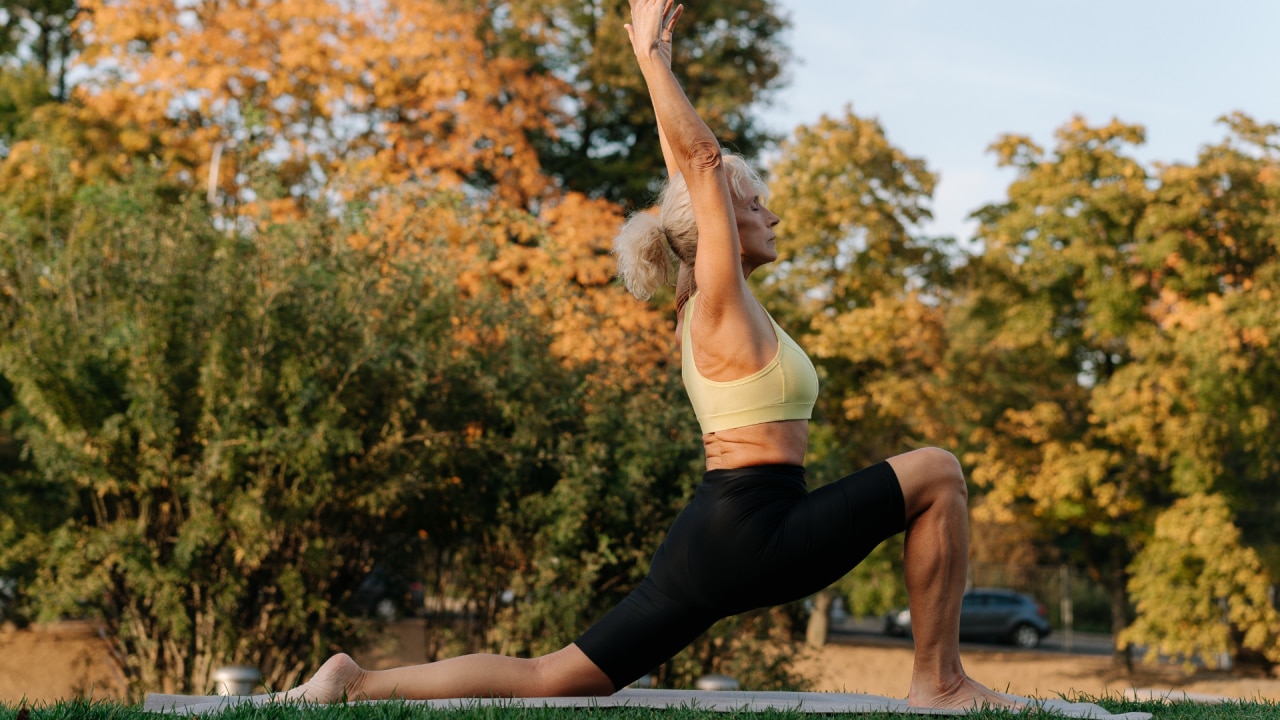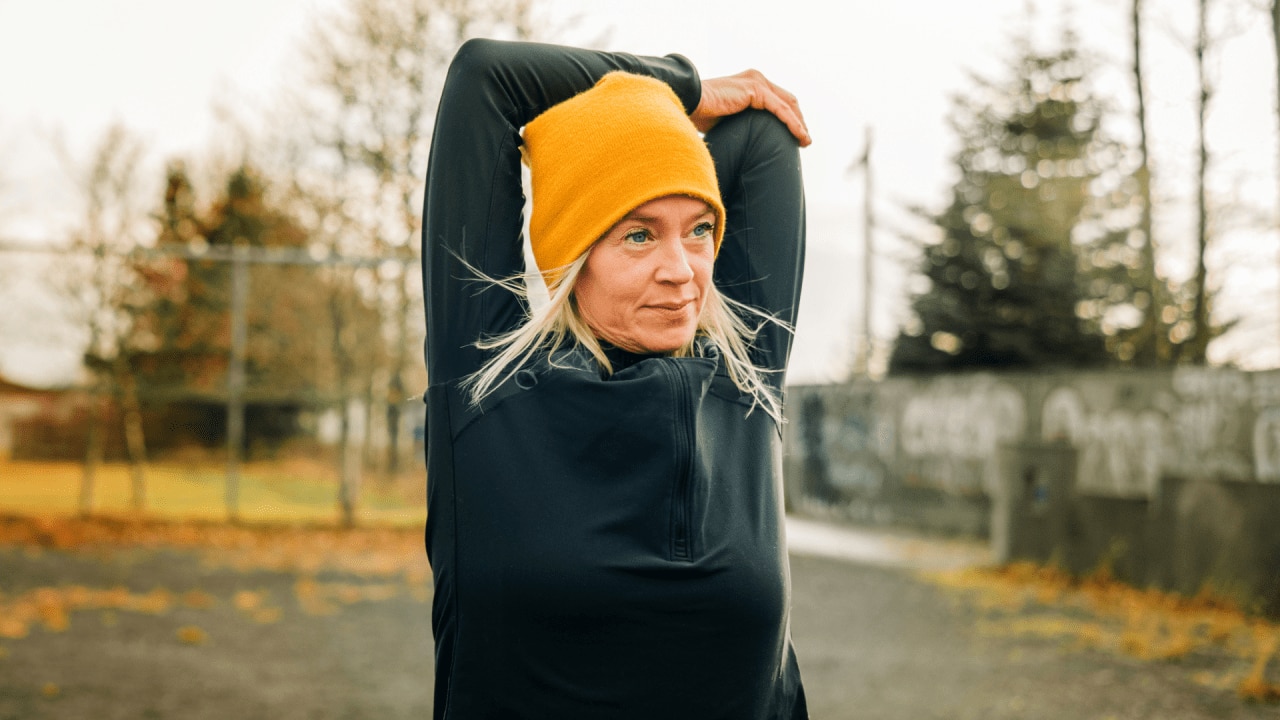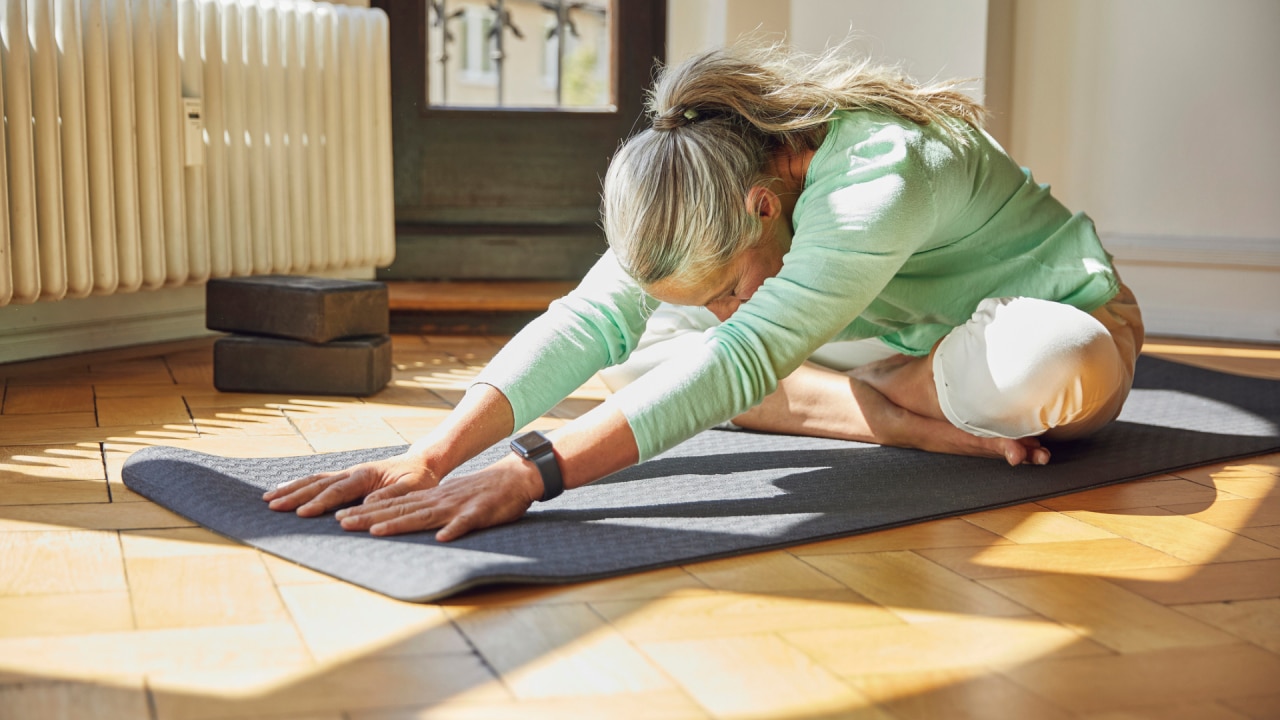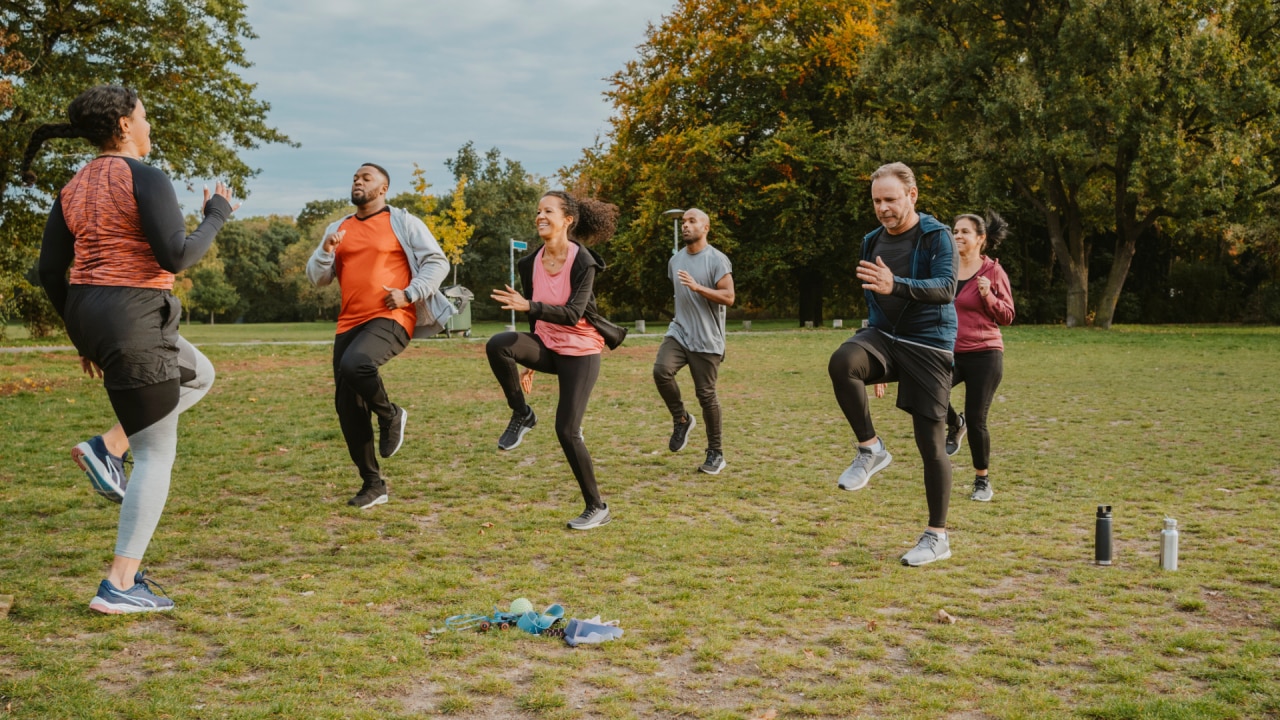8 ways to get stronger and fitter after 40
Yes, it is possible

From how to target belly fat to workouts that fire up your metabolism, this surprisingly simple advice from top trainers delivers serious results.
Customisation has long been one of the hottest trends in the health world. From smart watches to meal delivery services, the ability to track and adapt over time is the key to supercharging fitness results.
And as a growing body of science continues to confirm, the same goes for your workout. If you’ve been doing the same routine since your 20s (step aerobics, anyone?), it could be time for a serious exercise shake-up.
“As females, we experience changes in our bodies at all ages and stages of life,” explains principal instructor and founder of Fluidform Pilates, Kirsten King. “Between the ages of 30 and 70, our bodies experience a new feeling of change, shifting from fertility and reproduction to nourishment and conservation.”
As a result, we need a different approach to fitness in midlife. And the good news is it’s possible to get stronger, fitter and leaner with age. Here’s what the experts recommend.
Like what you see? Sign up to our bodyandsoul.com.au newsletter for more stories like this
1. First strengthen
Your hamstrings, glutes, lower abs and middle back
Before embarking on any exercise plan, you should ensure these four muscle groups are strong, says trainer Zana Morris. “There’s almost no point in starting any sort of resistance training program unless you have good strength in these key areas,” she says. “If they’re weak, you’ll have poor posture and that will leave you more vulnerable to injury.”
A circuit of bodyweight exercises, including squats, glute bridges, rotational planks, mountain climbers, scissor kicks and press-ups, will do the job. “Once you are strong in these areas, you can tackle any other type of exercise,” adds Morris. “Spend three to four weeks on a foundation program that leaves you prepared.”
2. Don't overdo
Any single type of exercise
Midlife is not the time to take up running, swimming or spinning at the expense of every other type of activity. “At this stage, the greater the variety of activity, the better,” says former Olympic hurdles champion, Sally Gunnell. “If cycling or running are your preferred forms of exercise, you need to face the fact that you will only be able to keep them up indefinitely if you also work at stretching, strengthening and mobilising muscles all over the body.”
Doing the same thing again and again also raises the risk of overuse injuries. “Your body responds best to new challenges and mixing things up from middle age,” adds Gunnell. “Try to embrace a little strength, cardio, flexibility and balance training every week.”

3. Play tennis, dance and lift weights
To boost bone health
Oestrogen is the key hormone for protecting bone health, and its dramatic drop during menopause is why women are much more at risk of osteoporosis.
“Bone health is supported by exercise that loads the skeleton in a multi-directional way – movement involving changes in direction, such as dancing or tennis, netball and other ball sports,” says hormone health expert, Dr Nicky Keay. “But if these aren’t your thing, try doing simple exercises at home for 15 minutes, three times a week, including hopping, skipping or 20 star jumps, morning and evening.”
Lifting weights two or three times a week is also important, says Lucas. “Putting stress on the muscles and bones through regular exercise forces them to get stronger.”
“Weight training boosts bone health in different ways,” adds Keay. “The extra load through the skeleton provides a direct mechanical bone-building stimulus, while resistance indirectly supports bone health by recruiting different muscle groups that pull on the bone these muscles are attached to, strengthening both the muscles and your bones in the process.”
4. Add pilates and resistance bands
To optimise and strengthen muscles
From middle age onwards, a drop in hormone levels also contributes to age-related muscle loss, called sarcopenia – in women and men. “A decline in oestrogen in our 40s brings a decrease in muscle mass and bone density, which strength training can help to counteract,” advises King. The good news? “Strength training doesn’t have to be lifting heavy weights – resistance training and low-weight exercises can significantly improve your muscle mass and strength,” she says.
Keay adds that reformer Pilates, which involves working against a series of pulleys, and the use of resistance bands are a good move to feeling fitter with age. “Both of these types of exercise work what is known as a closed kinetic chain, which is the most effective way to make your muscles work through all phases of contraction, including the concentric (shortening) and eccentric (lengthening) of muscles,” she says.
“With free weights, people tend to focus on just the concentric or lifting phase and then let the weight fall under gravity rather than control the lowering of it, which is not as beneficial.”
Morris is also a fan of resistance bands and tubes. “They are inexpensive, and if you buy them in different resistances can be a good alternative to weights for some exercises,” she says.
5. Devote five minutes
To stretching
“Movement is essential to lubricate our joints and improve mobility,” says King. “While strength training will help to build the muscles that support our joints, stretching will help to relieve stiff joints and tight muscles.”
Not that this means you need to do pretzel style yoga poses, or even actually be able to touch your toes. “Stretching little and often, for five to 10 minutes a day, is better than doing one full-on yoga class a week,” says yoga instructor, Lexie Williamson, author of Move. “Try to maintain a good general range of motion through ‘limbering’, dynamic style movements such as leg swings, and also hold static stretches for at least 20 seconds to improve flexibility.”

6. Combine kettlebells
With cardio
Once you’re used to using dumbbells, it’s worth investing in a kettlebell. “They’re fantastic for large, full-body movements, such as a classic kettlebell swing, that will really help with fat burning around the core area, which includes the waistline and back,” says Morris.
In a study at Wisconsin University, beginners who took part in a 50 to 60-minute-long kettlebell class twice a week recorded a 70 per cent boost in their core strength, and a sharp increase in aerobic fitness over eight weeks. The routine included a warm up and cool down, with 30 to 45 minutes of kettlebell exercises such as swings, snatches, presses and lunges.
For even better results, you could try working out in the morning. Researchers showed morning exercise to be best for belly fat loss in women.
“On days when you’re not doing intense training with dumbbells and kettlebells, try to include some moderate cardio in the form of fast walking, running or cycling,” says Morris. “From 40 onwards we need it for heart health and circulation, to support good mobility and because it has such a calming effect on the mind. The cardio and weights combo has also been proven the most effective route to fight belly fat.”
7. Begin with dumbbells
To fire up your metabolism
“Weight training is the single best thing that women in their 40s and beyond can do,” says co-founder and director of Flow Athletic, Ben Lucas. “Prioritising these muscle groups will help prevent injury and keep you strong as you age.”
And if you buy any home gym equipment, make it a set of dumbbells, advises Morris: “They are exceptionally versatile and are such a simple way to up the intensity of any bodyweight workout. Buy neoprene weights which are comfortable to use, then experiment with moves such as deadlifts and the dumbbell bench press, which will build lean muscle mass and increase your metabolism.”
The golden rule is to select a weight that can be lifted 10 times, with the last two reps posing a significant challenge. “Your muscles need a progressively greater stimulus to see ongoing changes,” says Gunnell. “Add more weight in increments once you can easily complete sets of an exercise with a current weight, but don’t progress so quickly that it impacts technique.”

8. Add intensity
To blast belly and back fat
Hormonal shifts during menopause change the distribution of body fat in women’s bodies, with storage switching from the buttocks and thighs to the belly and upper back – even in women who were previously washboard slim.
“Almost every middle-aged woman I work with comes to me complaining of that ring around the middle that wasn’t there before, and that just won’t budge,” says Morris. “But along with hormones, the prime reason they can’t shift it is because their exercise regimen hasn’t changed in years.” Changing the ratio and focus of cardio and strength training is key.
“Doing too much running or cardio and lifting weights without progression and intensity can leave women on a fitness plateau. To blast that belly and back fat you need to be doing two or three high-intensity exercise sessions a week,” says Morris. “Start with bodyweight exercises such as squats and lunges, gradually adding weights and performing 18 repetitions with a short 30-second break, and repeating a few sets of each in a maximum 20-minute workout.”
More Coverage
Originally published as 8 ways to get stronger and fitter after 40




